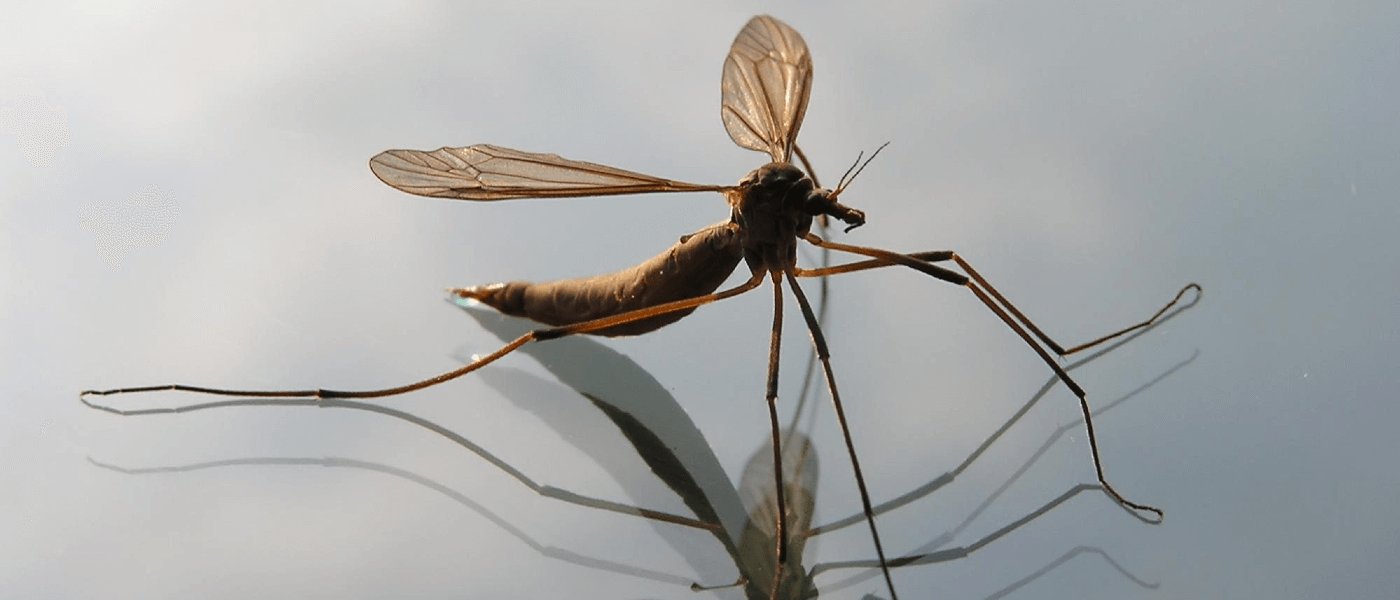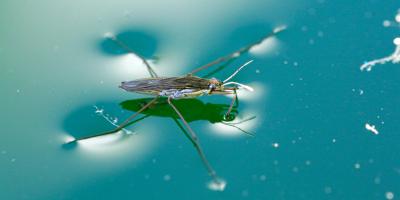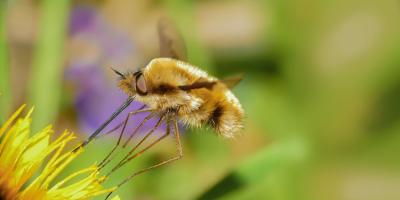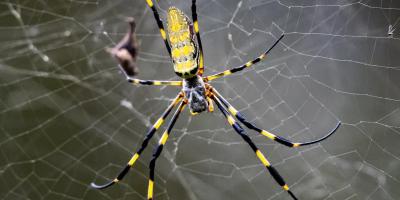What's With the Giant Mosquitoes?

Have you ever seen a giant mosquito? You may think you have, but “giant mosquitoes” (also sometimes called “mosquito hawks”) aren’t actually mosquitos at all. They’re a distinct species called crane flies and -- best of all -- they don’t bite.
Mythbusting: Mosquitoes vs. Crane Flies
There’s a wealth of confusion and mythology surrounding these gangly creatures often misidentified as male mosquitoes. But considering how generally harmless crane flies are compared to mosquitoes, which the Centers for Disease Control and Prevention call “the world’s deadliest animal,” it’s incredibly important to know the difference.
Anyone who ever tells you they’ve been bitten by a crane fly is either mistaken or fibbing. Fact is, it’s impossible -- not only are they not blood feeders, they don’t have the mouth parts for biting, nor do they have stingers. What they do have are long, lanky legs (like the daddy long-legs spider), long thin bodies and, like all true flies, only two wings that are also characteristically long and thin.
Although they are harmless to humans, crane fly larvae can be devastating to grass. Crane flies lay their eggs in the soil, and when the white, worm-like larva emerge they feed on the roots below the turf, causing brown patches to appear in an otherwise perfect sea of green. If left to reproduce unchecked, large enough numbers of crane fly larvae can wreak havoc on a previously-well-manicured lawn.
Another myth, suggested by the “mosquito hawk” moniker, is that crane flies kill mosquitoes. Actually, crane flies are gentle vegetarians that sip nectar from flowers -- if they feed at all. Adult crane flies have a lifespan of only about 10 to 15 days, during which their entire purpose in life is to reproduce. Often, they forgo foraging during this brief period.
But just because they don't get rid of nature’s deadliest pest doesn’t mean they aren’t beneficial to the environment. So long as you don’t have a brood of crane fly larvae destroying your pristine lawn or garden, crane flies can actually aid in the decomposition of dead plant matter by feeding on it. Even so, it’s best to keep in control of crane flies when it comes to your property.
How to Control Crane Flies
While harmless, crane flies can be something of a nuisance. If you need to shoo them away, whether it’s because their larvae are feasting on your luscious lawn or lavish vegetable garden, there are a few simple things you can do to make your home and yard less appealing to them.
Birds are natural predators of crane flies and their larvae, so adding a birdfeeder to your yard can help control them, as well as other unwanted pests. A well-maintained lawn is also less enticing to crane flies, which are attracted to the thatch that forms when dead grass piles up. Dethatching and aerating your lawn regularly will also help control the crane fly populations.
All in all, crane flies are a relatively benign presence. If the flies around your yard turn out to be standard mosquitoes, that’s a different story. Click here to read all about these pests and what you can do to control them.



